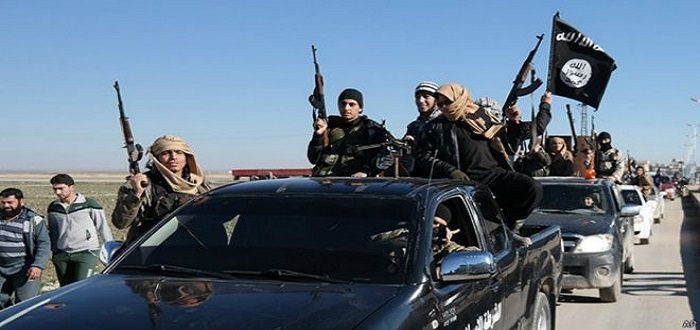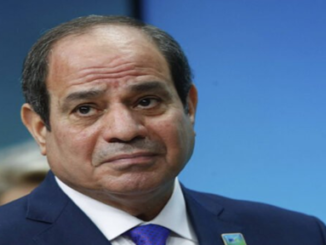
Assad regime forces’ fierce offensive cost the Syrian rebels all of the northern neighborhoods of their stronghold in east Aleppo on Monday, forcing more than 20.000 civilians to flee according to the International Committee of the Red Cross.
The Assad regime forces, backed by Russian air power, Iranian ground forces and Shi’ite militia fighters from Iran, Iraq, and Lebanon, has been tightening its grip on rebel-held districts of Aleppo this year.
They have gradually closed in on eastern Aleppo this year, first cutting the most direct lifeline to Turkey before fully encircling the east, and launching a major assault in September.
Assad regime forces started a major offensive to push opposition fighters out of the besieged eastern half of the city on 15 September.
Helicopters continue extensively dropping barrel bombs in conjunction with airstrikes by warplanes on areas in the eastern neighborhoods of the city, accompanied by artillery shelling by the regime forces in the same places.
The regime’s forces’ persistent and the intensive airstrikes forced the rebels to leave the areas they hold.
On Monday 28 November, government forces seized the Sakhur, Haydariya, and Sheikh Khodr districts, and Kurdish fighters took the Sheikh Fares neighborhood from rebels, the Syrian Observatory for Human Rights monitor said.
Rebels have lost most of the northern neighborhoods in besieged east Aleppo, it added, as the army pushed an offensive to retake the whole of Syria’s second city.
“The rebels have lost control of all the neighborhoods in the north of east Aleppo, and this is their worst defeat since they seized half the city in 2012,” said Observatory director Rami Abdel Rahman.
Syrian state news agency SANA reported the capture of Haydariya and Sakhour as it looped footage showing some of the thousands of civilians who have fled east Aleppo in recent days as loyalist troops have advanced.
“Every day there are a lot of attacks, helicopters dropping barrel bombs and war planes dropping bunker-buster bombs and cluster munitions,” Modar Shekho, an emergency nurse in al-Shaar neighborhood, told Al Jazeera.
“The revolutionaries are fighting fiercely but the volume of bombardments and the intensity of the battles, the dead and the wounded, and the lack of hospitals, are all playing a role in the collapse of these frontlines,” said a rebel official.
“Aids from the Russians”
“During the last 24 hours, thanks to very well prepared and careful actions, Syrian soldiers were able to radically change the situation,” Major-General Igor Konashenkov, a spokesman for the Russian defense ministry, said in a statement.
“Practically half of the territory occupied by rebels in recent years in the eastern part of Aleppo has been completely liberated.”
Konashenkov called allegations of large civilian losses during the Syrian government operation alarmist and said Moscow was shocked by what he called the West’s “blindness” when it came to assessing the real situation on the ground.
“More than 80,000 civilians, including tens of thousands of children, had been able to access Russian humanitarian aid in the form of water, food and medical aid as a result of the military breakthrough,” he said.
“These Syrians were used as human shields for long years in Aleppo by terrorists of all allegiances,” said Konashenkov.
However, it seems that this aid came in form of bombs that were used by Assad regime to kill the civilians in Aleppo.
Russian bombers, which have pulverized east Aleppo for much of the past year, were again active on Tuesday, targeting what remained of neighborhoods closer to the Old City
20.000 civilians displaced
Thousands of civilians left their homes fleeing the extreme bombardment and the clashes in the eastern parts of Aleppo.
“Yesterday was the worst day we’ve witnessed since the war started. More than 1,500 families have fled to the regime-controlled west of the city. The bombing is horrific,” Ibrahim Abu Leith, Aleppo-based spokesman for the Civil Defence said on Monday
“The situation is disastrous,” added Ibrahim Abu Al-Leith.
“There is mass displacement and morale is in the gutter,” he said, his voice cracking with emotion.
“People are sleeping in the streets. They don’t have anything to eat or drink, but neither do we,” he told AFP.
“Intensified ground fighting and indiscriminate aerial bombardment over the past few days in eastern Aleppo city has reportedly killed and injured scores of civilians,” said UN humanitarian chief, Stephen O’Brien. “There are no functioning hospitals left, and official food stocks are practically finished.”
the International Committee of the Red Cross (ICRC) said on Tuesday that Some 20,000 people have fled the intensified attacks.
The aid agency said it stood ready to organize medical evacuations of the sick and wounded and called for civilians to be allowed safe passage out of the besieged eastern sector.
The ICRC called again for access to east Aleppo, which it has not been able to reach with food, medicines and other relief supplies since April.
“With no end in sight to the fighting or indeed a wider peace being reached, thousands of more civilians face a daily struggle to survive,” said Marianne Gasser, head of the ICRC delegation in Syria.
“The needs are massive, and the ongoing fighting and insecurity make aid deliveries and repairs difficult,” she said, noting that the ICRC and Syrian Arab Red Crescent (SARC) were helping to dig wells to provide water.
More than 40,000 people have fled areas of fighting in western Aleppo, the ICRC said, bringing the total who have left Syria’s biggest pre-war city to 60,000 since August.
What is next for Syria after Aleppo?
The holdout by the rebels in eastern Aleppo has served as a rallying cry for other rebel groups that have looked at their resistance as a sign that the Assad regime was vulnerable on the battlefield, and Aleppo became a new symbol for the Syrian revolution as the biggest rebel stronghold in Syria.
The Assad regime forces, backed by Russian air power, Iranian ground forces and Shi’ite militia fighters from Iran, Iraq, and Lebanon, has been tightening its grip on rebel-held districts of Aleppo this year.
They have gradually closed in on eastern Aleppo this year, first cutting the most direct lifeline to Turkey before fully encircling the east, and launching a major assault in September.
Rebels tried to break the siege two times, one in July and one in November but their attempts failed and the regime’s fierce offensive has cost them more than anyone has expected.
When the latest offensive started analysts feared that Assad regime might split rebel-held Aleppo in two, but today one-half of this region was lost.
Syria’s Al-Watan daily, which is close to the government, said the army was advancing quickly.
It said the next stage of the operation would be “to divide the remaining area into security districts that will be easily controlled and to capture them successively”.
The advance would then “push the gunmen to turn themselves [in] … or accept national reconciliation under the terms of the Syrian state”.
Capturing eastern Aleppo would be the biggest victory for Assad regime since the start of the revolution against him in 2011, restoring his control over the whole city apart from a Kurdish-held area that has not fought against him.
It would also be seen as a victory for his allies, Russia and Iran, which have outmaneuvered the West and Assad’s regional enemies through direct military intervention.
For Assad regime, taking back Aleppo would make its forces focus on ending the remaining rebels-held areas. These areas include the rebels’ stronghold in Idlib in addition to isolated areas in rural Damascus, Homs, and Hama.
These areas have been under daily bombardment and crippling siege for years. The Old city of Homs and parts of rural Damascus has already been lost to Assad regime, and the remaining areas are expected to follow.
As a conclusion, defeating the rebels and retrieving Aleppo means destroying the last major resistance stronghold of the Syrian rebels and will lead eventually to the victory of Assad regime and ending the Syrian revolution.



